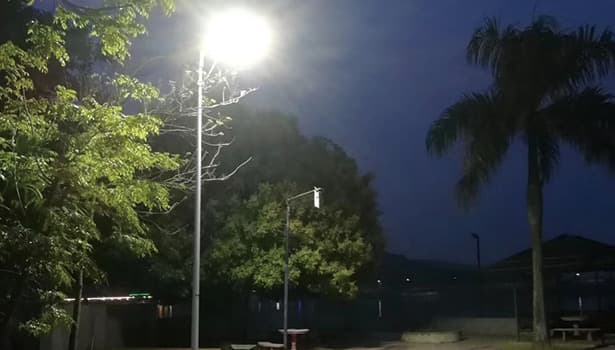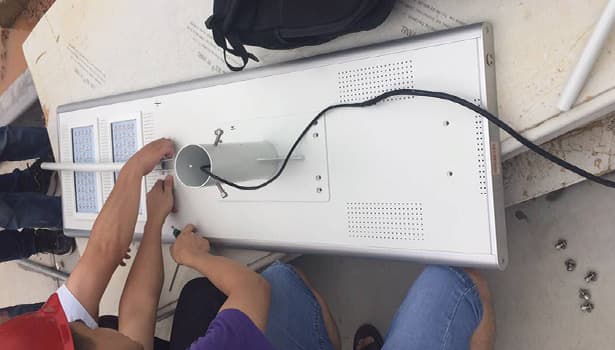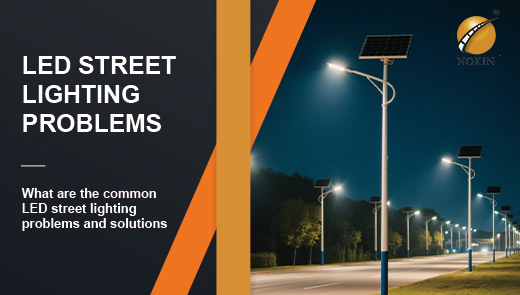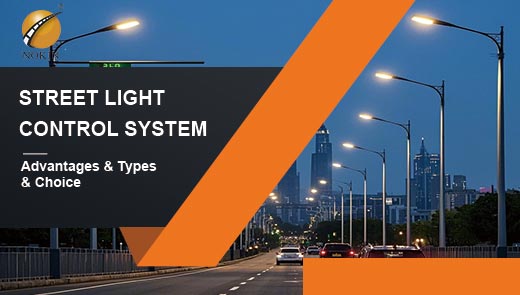Main Factors Affecting Solar Street Light Prices
For municipal project planners, real estate project developers, and even the construction of factory parks, the procurement of streetlights is by no means trivial. Streetlight price is directly related to the project's capital investment, affecting the overall budget allocation. In the pursuit of efficient lighting and reasonable cost balance, in-depth discussion of the factors affecting the price of solar street lights is particularly necessary.

Why Pay Attention to the Street Light Prices?
Purchasing cost considerations
In many projects, street light purchasing costs occupy a non-negligible proportion. Municipal road construction, for example, a few kilometers of road, the need to install a large number of streetlights, and the procurement costs of these streetlights add up and may reach millions or even tens of millions of dollars. For real estate developers, the configuration of streetlights in small areas is also a considerable expenditure. Reasonable control of street light prices means that more money can be saved in the project budget for other key aspects of the construction to enhance the overall effectiveness of the project.
Quality and price correlation
Usually, there is a strong connection between price and quality. Streetlights that are priced too low often use low-quality materials and components in the production process, which can lead to shorter service life, poor lighting effects, and even safety hazards. Concerned about the price of street lamps, help in the pursuit of cost-effectiveness at the same time to protect the quality of street lamps and to avoid frequent replacement of street lamps in the later period of the high cost.
Market price chaos
In the current street light market, the price is uneven. Some unscrupulous merchants, in order to maximize profits, use substandard means to bring low-quality street lamps to the market at a seemingly attractive low price. This makes consumers face a lot of confusion and risk when choosing streetlights. If you do not pay attention to the quality factors behind the price of streetlights, it is easy to fall into the price trap and buy products that do not meet the actual needs. The main factors affecting the price of streetlights
Main Factors Affecting Street Light Prices
Difference in streetlight types
The common types of streetlights on the market today are LED streetlights, solar street lights, traditional high-pressure sodium lamps, etc. LED streetlights use light-emitting diodes as a light source, which has the advantages of energy saving, long life, and good color rendering. Its working principle is through the compounding of electrons and holes in semiconductor materials to produce photons, thus realizing luminescence. Due to its advanced technology and performance advantages, the price of LED streetlights is relatively high.
Solar street lights utilize solar panels to convert solar energy into electricity and store it in batteries for nighttime lighting. It is environmentally friendly and does not require the laying of cables, etc. It is suitable for some remote areas or places with high environmental protection requirements. However, the price of solar powered street lights is affected by key components such as solar panels and batteries, and the overall price is also at a high level.
The traditional high-pressure sodium lamp is a more traditional type of street light, which emits light through high-pressure sodium vapor discharge. Although its price is relatively low, the shortcomings of high energy consumption, short life, and poor color rendering are also more obvious. Different types of street lamps due to technology and different sources of energy, resulting in large differences in their prices.
Quality of core components
LED chip: The LED chip is one of the core components of solar LED streetlights, and its quality directly affects the luminous efficiency, brightness, and life of the streetlights. Well-known brands of LED chips have higher luminous efficiency and stability; the price is relatively high. Some small brands or cottage chips, although inexpensive, may have insufficient brightness, light decay, and other problems.
Solar panel: For solar street lights, the power and conversion efficiency of solar panels are crucial. The higher the power and conversion efficiency of the solar panel, the more solar energy can be collected in the same time to provide more adequate power for the street lamp. High-quality solar panels with a conversion efficiency of more than 20% are naturally pricier.
Batteries: Batteries are the key components for storing electricity, and common ones are lithium batteries and lead-acid batteries. Lithium batteries have the advantages of high energy density, long life, and fast charging speed, but the price is relatively high. Lead-acid batteries, on the other hand, are cheaper but have lower energy density and shorter lives. Different types and capacities of batteries have a greater impact on the price of solar powered streetlights.
Light pole: The material and height of the pole will also affect the price of streetlights. Common materials for light poles are aluminum alloy, stainless steel, and steel. Aluminum alloy light poles are lightweight, corrosion resistant, and have other advantages, but the price is relatively high; stainless steel light poles have a beautiful appearance and corrosion resistance, but the cost is also higher; and steel light poles have a relatively low price, but they need anti-corrosion treatment. In addition, the higher the height of the light pole, the more materials required, and the price will increase accordingly.
Configuration requirements
Lighting Brightness: Lighting brightness is one of the important performance indicators of streetlights. For some roads with high traffic flow and high lighting requirements, they need to be equipped with high-brightness solar led street lights. High-brightness streetlights usually require a higher-power light source and a better heat dissipation system, which will undoubtedly increase the cost of streetlights.
Lighting duration: Different places have different requirements for lighting duration. For example, some commercial areas may require street lighting for up to 10 hours or more, while some residential areas may only require 6-8 hours of lighting. To meet the demand for different lighting hours, the battery capacity of the street light and the power of the solar panel need to be adjusted accordingly, which will affect the price of the solar street light.
Intelligent control function: With the development of technology, more and more solar street lights have intelligent control functions, such as intelligent dimming, remote monitoring, and so on. These functions can not only realize energy savings but also improve the management efficiency of streetlights. However, the addition of intelligent control modules will undoubtedly increase the manufacturing cost of streetlights, resulting in higher prices.
Brands and after-sales
Brands: Well-known brands tend to have higher credibility and reputation in the street light market. These brands usually invest a lot of money in research and development to continuously improve product performance and quality. At the same time, they adopt advanced production technology and a strict quality control system to ensure that each street light meets high standards.
After-sales service: A perfect after-sales service system is also one of the factors affecting the price of street lights. High-quality after-sales service includes a longer warranty period, fast maintenance response speed, etc. In order to provide such services, enterprises need to invest more human, material, and financial resources, and these costs will eventually be reflected in the price of streetlights.

Price Composition of LED Street Light
Raw materials and parts cost
LED Light Source: The LED light source is the core of the LED street light, and its cost accounts for a large part of the whole street light price. The price difference of LED light sources of different brands and quality levels is obvious. A high-quality LED light source has high luminous efficiency, a long life, and a relatively high price.
Lamp shell: the material and process of the lamp shell have a greater impact on its cost. Common lampshell materials include aluminum alloy, plastic, and so on. The aluminum alloy lamp shell has good heat dissipation performance and corrosion resistance, but its cost is relatively high. The plastic lamp shell price is lower, but the heat dissipation performance is relatively poor. In addition, the manufacturing process of the lamp shell, such as die-casting, injection molding, etc., will also affect its cost.
Power supply: The power supply is an important part of the LED light source to provide stable voltage and current. High-quality power supply, its high efficiency, and good stability can effectively extend the service life of the LED light source. But the cost of such a power supply is also relatively high.
Heat sink: As the LED light source will produce a lot of heat in the working process, in order to ensure its normal operation, it needs to be equipped with a good heat sink. The material, size, and heat dissipation method of the heat sink will affect its cost.
Production and manufacturing costs
Labor Costs: In the production process of solar LED streetlights, a lot of labor is needed, such as assembling, debugging, and so on. The level of labor cost is closely related to the local labor market price.
Depreciation of equipment: The production of LED streetlights requires the use of specialized equipment, such as automated production lines, testing equipment, etc. This equipment has high acquisition costs. The purchase cost of this equipment is high, and with the increase of using time, depreciation expenses will be incurred. Depreciation of equipment will be apportioned to the production cost of each street light.
Complexity of production process: A complex production process can improve the quality and performance of solar LED streetlights, but it will also increase the production cost. For example, some high-end LED streetlights use advanced flip chip technology and eutectic welding processes. These processes can improve the luminous efficiency and reliability of the LED light source, but the requirements for production equipment and technicians are higher, which leads to higher production costs.
Transportation and packaging costs
Street Light Volume and Weight: The volume and weight of LED street lights are large, especially some high-power, high-pole street lights. During transportation, large transportation vehicles are required, and special packaging and fixing measures may be needed to ensure that the streetlights are not damaged during transportation. All these will increase the transportation cost.
Transportation distance: the length of the transportation distance directly affects the transportation cost. If the purchaser is far away from the manufacturer, the transportation cost will increase accordingly. In addition, some remote areas are more difficult to transport to and may require additional transportation costs.
Packaging materials: In order to protect the solar LED street light from damage during transportation and storage, suitable packaging materials are needed. High-quality packaging materials, such as foam boards and wooden crates, provide better protection but are also more costly. The cost of packaging materials will be apportioned to the price of each street light.
Business operation and profit
Business Operation Costs: Business operation requires a number of expenses such as site rental, management costs, marketing costs, and so on. All these expenses will be apportioned to the product cost, thus affecting the price of LED streetlights.
Profit margin: When selling LED streetlights, enterprises need to make a certain profit to maintain normal operation and development. A reasonable profit margin is a necessary condition for the survival and development of enterprises. Different enterprises have different profit targets, which will also lead to differences in the price of LED streetlights.

How Are Retail Solar Street Light Costs Analyzed?
Retail solar street light features
Retail solar street lights are usually characterized by small size and low power. The power of common retail solar street lights is usually between 5 and 30 watts, which is suitable for yards, small roads, park trails, and other places. These streetlights are easy to install; there's no need to lay complicated cables. They are solar powered, energy saving, and environmentally friendly, and they have a variety of appearance designs that can meet different consumers' needs for aesthetics.
Purchasing points
Battery Capacity: When purchasing retail solar street lights, pay attention to the battery capacity. Battery capacity determines the lighting hours of the street light. According to the actual use of demand, choose the appropriate capacity of the battery. If you need the street light to illuminate for a longer period of time, you should choose the product with a larger battery capacity.
Solar panel power: Solar panel power directly affects the charging speed and lighting effect of the street light. Choosing the right power for the solar panel can ensure that the street light is quickly charged in sufficient sunlight to meet the lighting needs at night. Generally speaking, the solar panel power should match the street light power and battery capacity.
Lamp waterproof rating: Since retail solar street lights are usually installed outdoors, they need to have good waterproof performance. When purchasing, check the waterproof rating of the lamps and choose products with higher waterproof ratings to ensure that the streetlights can work properly on rainy days and in other harsh environments.
Product certification: Choose retail solar street lights with relevant product certifications, such as CE certification, ROHS certification, and so on. These certifications are the recognition of product quality and safety and can protect the rights and interests of consumers.
How Are Project-Based Solar Street Light Costs Analyzed?
Demand characteristics of project-based solar street lights
Project-based solar street lights are mainly used in large-scale municipal engineering, park construction, and other projects. These projects have high requirements on the stability, lighting effect, and service life of solar street lights. For example, in municipal road lighting projects, solar street lights are required to provide sufficient lighting in a continuous and stable manner to ensure road traffic safety. At the same time, the number of project-based solar street lights is high, which poses a higher challenge to the overall cost control.
Project budget considerations
Equipment Procurement Cost: Equipment procurement cost is an important part of the cost of project-based solar street lights. In the procurement process, it is necessary to select cost-effective products through multiple supplier price comparisons and bidding. At the same time, we should pay attention to the quality and after-sales service of the products to avoid purchasing low-quality products due to the greed of low price, which will lead to the increase of maintenance cost in the later stage.
Installation and commissioning costs: The installation and commissioning of project-type solar street lights require professional technicians and equipment. Installation and commissioning costs include labor costs and installation tools and equipment rental costs. In the project budget, it is necessary to reasonably estimate the installation and commissioning costs and ensure the quality and progress of the installation and commissioning work.
Maintenance cost: In the life cycle of solar street lights, maintenance cost is also a part that cannot be ignored. Maintenance costs include regular inspection, cleaning, parts replacement, and other costs. Choosing reliable quality products can effectively reduce the maintenance cost. At the same time, a reasonable maintenance plan should be made to ensure the normal operation of the street light system.
Transportation cost: Due to the large number of project-based solar street lights, transportation cost is also part of the project cost. When choosing a supplier, consider the distance between the supplier and the project location, as well as the transportation mode and other factors, to reasonably control the transportation costs.

How to Buy Cost-Effective Solar Street Lights?
Clarify the actual demand
Road width and lighting demand: Determine the power and installation spacing of solar street lights according to the width of the road. Generally speaking, the wider the road is, the higher the power of the street light is and the smaller the installation distance is.
Use environment: Consider the use environment of the solar street light, such as light conditions and climate conditions. In areas with sufficient light, the power of solar panels can be appropriately reduced, while in areas with insufficient light or frequent cloudy and rainy weather, it is necessary to choose solar panels with higher power and conversion efficiency. At the same time, according to local climatic conditions, choose the street lamp with appropriate protective properties, such as in cold areas, choosing a street lamp with good cold resistance; its battery, lamp shell, and other components should be able to withstand low-temperature environments to avoid low temperatures leading to a decline in the capacity of the battery, brittle lamp and lantern materials, and other issues affecting the normal use of street lamps.
Lighting hours demand: Different places have different lighting hours requirements for solar street lights. Commercial areas have large traffic volume at night and long business hours, which often require streetlights to continue lighting from evening to early morning, and the lighting duration may reach 10 hours or even longer; while residential activities are relatively concentrated in specific time periods at night, and the lighting duration of 6-8 hours can usually satisfy the demand. After clarifying the demand for lighting hours, you can accordingly configure the appropriate capacity of the battery and power-matching solar panels.
Check product quality
Check product certification. Product certification is an important basis for measuring the quality and safety of solar street lights. Such as CE certification, indicating that the product meets European safety, health, and environmental standards; ROHS certification restricts the use of hazardous substances in the product to protect the user's health and environmental safety. With these certificates of solar street lamps, in the production process to follow the strict standards, the quality is more guaranteed.
Understand the product material and process: high-quality solar street lights in the material selection are very careful. If the pole is made of hot-dip galvanized steel, after the surface spray treatment, it can not only effectively prevent rust and corrosion and extend the service life but also maintain the beauty. Solar panel substrate material affects its power generation efficiency and durability; high-quality substrate can improve the light energy conversion rate and anti-aging ability. The production process is also critical; a fine welding process can ensure stable circuit connection and reduce the probability of failure, and a good potting process can make the lamps and lanterns internal electrical components get effective protection and improve the lamps and lanterns waterproof and dustproof performance.
Field trip or view samples: If conditions permit, go to the manufacturer or sales store to inspect the solar street light samples. You can also ask customers who have already used the product to understand their actual use experience and product quality feedback and evaluate product quality from various aspects.
Compare brands and prices
Learn more about different brands: there are many solar street light brands on the market, each with its characteristics. Through Internet searches, industry forums, product reviews, and other channels, collect information on different brands of solar street lights to understand their product performance, reputation, market share, and so on.
Comparison of price and performance: After understanding multiple brands, make a detailed comparison of their product price and performance. List the price of each brand of the same type and specifications of solar street lights, and at the same time, compare its key performance indicators, such as solar panel conversion efficiency, battery capacity and life, and luminous efficiency of lamps and lanterns.
Focus on brand after-sales service: quality after-sales service can provide protection for later use. Understand the brand's warranty policy, including the warranty period and warranty scope, as well as the after-sales service response speed and quality during the warranty period. Choosing a brand with good after-sales service can reduce maintenance expenses and risks.
Consider long-term cost
Initial purchase price and long-term maintenance cost: The initial purchase price of solar powered street lights is only a part of the cost, and the long-term maintenance cost should not be ignored. Although the initial purchase price of low-quality solar street lights may be lower, in the process of use, due to frequent failures, the need to replace parts and repair will produce higher maintenance costs.
Service life and replacement cost: The service life of the product is directly related to the replacement cost. High-quality solar LED street lights use high-quality core components and advanced production processes, which have a long service life and can reduce the frequency of replacement and long-term costs. When evaluating the product, pay attention to its service life and combine it with the replacement cost for comprehensive consideration.
Energy-saving effect and long-term electricity cost: the energy-saving effect of solar LED street lights affects the long-term electricity cost. Energy-efficient solar street lights can make better use of solar energy, reduce the dependence on external electricity, and lower the long-term electricity cost. When shopping, understand the product's energy-saving performance indicators and choose solar street lights with good energy-saving effects to reduce long-term operating costs.

Conclusion
Paying attention to the price of streetlights, understanding the factors affecting the price in depth, and mastering the scientific method of purchase are extremely important for guaranteeing the lighting effect and reasonably controlling the cost. Whether it is a municipal project, real estate development, or other projects involving the procurement of streetlights, when purchasing streetlights, there should be a comprehensive consideration of the above factors. Only in this way can we make a wise, scientific decision to purchase solar street lighting products that meet the lighting needs and achieve the best balance in cost-effectiveness and realize the efficient and sustainable development of the project.




